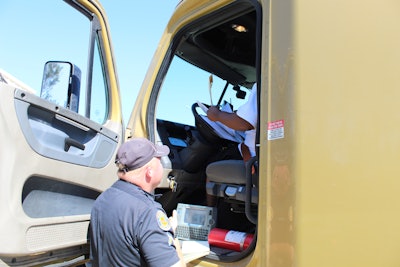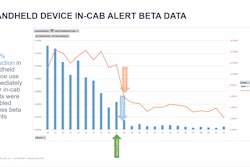Although they compete in the fleet telematics and ELD market, Omnitracs and EROAD have been working on a joint project with the Commercial Vehicle Safety Alliance (CVSA) to revamp the guidelines for hours of service inspections.
 The updated Inspection Bulletin for ELDs will help to resolve areas of confusion for inspecting drivers’ records of duty status.
The updated Inspection Bulletin for ELDs will help to resolve areas of confusion for inspecting drivers’ records of duty status.The companies announced their efforts have resulted in an updated CVSA’s Inspection Bulletin on U.S. Electronic Logging Devices, which was originally penned in 2017 concurrent with the implementation of the ELD Mandate. The updated version is now live on CVSA’s website — revised as of Sept. 28, 2020.
With feedback from customers, Omnitracs and EROAD identified a lack of consistency during inspections to determine regulatory violations. The update to the Inspection Bulletin will alleviate some common pain points around enforcement actions for both drivers and law enforcement officials, the companies said.
“Enforcement officials and drivers have been confronted with the requirement to employ complex technology to manage a driver’s records of duty status, so we felt it was our duty to come together as an industry and eliminate common points of frustration for everyone involved in the inspection process,” said Michael Ahart, vice president of regulatory affairs at Omnitracs.
Fleet customers of Omnitracs and EROAD have expressed confusion around ELD data transfers that use the Electronic Records of Duty Status (eRODS) system. The standardized data files from ELDs are transferred and decoded in eRODS, and the format for how eRODS data is displayed has been difficult for law enforcement to interpret, particularly during roadside inspections.
The confusion often results in fleets spending additional time and resources to submit DataQs to the Federal Motor Carrier Safety Administration (FMCSA) to overturn invalid or incorrect violations.
Data displayed in eRODS sometimes produces issues and presents different results than on the ELD, which appear to be citable offenses. For example, when there are co-drivers or multiple drivers switching vehicles without powering off the vehicle, shipping documents or trailer numbers may not be captured on eRODS due to missing power-cycle events.
When improperly deciphered, the eRODS may display ELD data in a way that leads to invalid violations, longer inspections and stress for drivers and fleet managers. The updated bulletin contains added clarification around the proper approach to interpreting data on eRODS, as well as recommendations for alternative methods for verifying mandatory data elements.
The collaboration between Omnitracs and EROAD also provided more transparency in the Inspection Bulletin around specific errors that may occur. For instance, officers may need to review odometer jumps, missing vehicle identification numbers, and miles driven, in addition to clarifying ELD exemptions.
“There are cases where – for no fault of the driver, carrier or the inspector – the ELD data transferred to eRODS does not show the complete picture,” said Soona Lee, director of regulatory compliance at EROAD. “In supporting our drivers and customers with inspection DataQs, we’ve been able to identify the most common technical limitations an inspector may find with ELD data transferred to eRODS and provide guidance through this refreshed inspection bulletin.”
Omnitracs and EROAD also sought additional insight from other ELD providers to have a more comprehensive perspective. The document was shared with the FMCSA for their input before it was adopted by the Driver-Traffic Enforcement Committee during the 2020 CVSA Virtual Fall Conference, held in late September.
“This inspection bulletin sets an exciting precedent for the industry, as it’s the result of ELD providers coming together to collaborate across company lines while working in conjunction with CVSA and law enforcement,” said Kerri Wirachowsky, director of roadside inspection program at Commercial Vehicle Safety Alliance.











